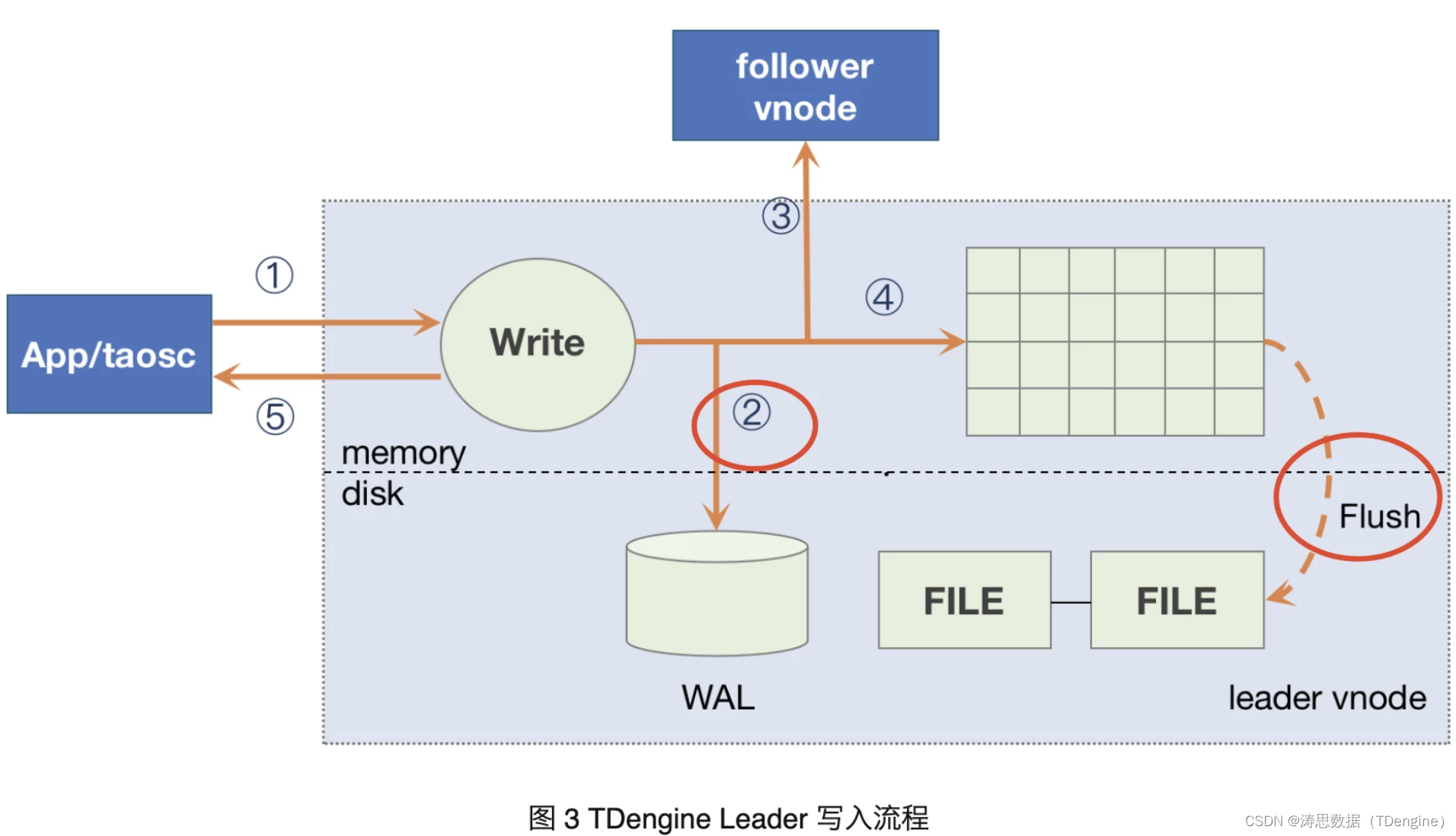requests介绍
python操作网络,也就是打开一个网站,或者请求一个http接口,使用urllib模块。
urllib模块是一个标准模块,直接import urllib即可,在python3里面只有urllib模块,在python2里面有urllib模块和urllib2模块。
python">import json
from urllib import request
from urllib import parse
pay_url = 'http://szz.xxxx.cn/pay'
balance_url = 'http://szz.xxxx.cn/get_balance'
balance_data = {'user_id':1}
new_balance_data = parse.urlencode(balance_data)#把请求参数变成xx=11这样的
balance_req = request.urlopen(balance_url+'?'+new_balance_data)#发送get请求
print(balance_req.read().decode())
#获取接口返回的结果,返回的结果是bytes类型的,需要使用decode方法解码,变成一个字符串
pay_data ={"user_id":1,"price":"999"}
new_pay_data = parse.urlencode(pay_data)#把请求参数变成xx=11这样的
pay_req = request.urlopen(pay_url,new_pay_data.encode())#发送post请求,传入参数的话
#参数必须是bytes类型,所以需要先encode一下,变成bytes类型
print(pay_req.read().decode())#获取接口返回的结果,返回的结果是bytes类型的
#需要使用decode方法解码,变成一个字符串
res = json.loads(pay_req.read().decode())
#因为返回的是一个json传,想把json串转成字典的话,久使用json模块转成一个字典
print(res)上面是使用python自带的urllib模块去请求一个网站,或者接口,但是urllib模块太麻烦了,传参数的话,都得是bytes类型,返回数据也是bytes类型,还得解码,想直接把返回结果拿出来使用的话,还得用json,发get请求和post请求,也不通,使用比较麻烦,还有一个比较方便的模块,比urllib模块方便很多,就是requests模块,它是基于python自带的urllib模块封装的,用来发送http请求和获取返回的结果,操作很简单,它使用比较方便,需要安装,pip install requests即可。
request使用
首先,先举个简单的例子:
# 首先导入请求模块
import requests
# 现在,让我们尝试获得一个网页,在这个例子中,让我们获得 GitHub 的公共时间表:
r = requests.get('https://api.github.com/events')
# 现在,我们有一个名为 r 的 Response 对象,我们可以从这个对象中获取所需的所有信息。
# 输出返回值
print(r.json())requests请求方式
requests提供的各个请求方式:
r = requests.get('https://api.github.com/events') # HTTP GET 请求
r = requests.post('https://httpbin.org/post', data = {'key':'value'}) # HTTP POST 请求
r = requests.put('https://httpbin.org/put', data = {'key':'value'}) # HTTP PUT 请求
r = requests.delete('https://httpbin.org/delete') # HTTP DELETE 请求
r = requests.head('https://httpbin.org/get') # HTTP HEAD 请求
r = requests.options('https://httpbin.org/get') # HTTP OPTIONS 请求在url 中传递参数
通常希望在 URL 的查询字符串中发送某种类型的数据。如果你手工构建 URL,这些数据会在 URL 中的一个问号后面作为键/值对给出,例如 httpbin.org/get?key=val。Request 允许您使用 params 关键字参数将这些参数作为字符串字典提供。举个例子,如果你想传递 key1 = value1和 key2 = value2到 httpbin.org/get,你可以使用以下代码:
payload = {'key1': 'value1', 'key2': 'value2'}
r = requests.get('https://httpbin.org/get', params=payload)通过打印 URL,URL 已经被正确编码:
print(r.url)
# https://httpbin.org/get?key2=value2&key1=value1注意,任何值为 None 的字典键都不会添加到 URL 的查询字符串中。
例:
import requests
payload = {'key1': 'value1', 'key2': ['value2', 'value3'], 'key3': None}
r = requests.get('https://httpbin.org/get', params=payload)
print(r.url)
# https://httpbin.org/get?key1=value1&key2=value2&key2=value3Response Content 响应内容
我们可以读取服务器响应的内容,如GitHub 时间表:
import requests
r = requests.get('https://api.github.com/events')
print(r.status_code) # 获取返回状态码
# 200
print(r.content) # 获取返回的内容,二进制格式,一般下载图片、视频用这个
# b'[{"id":"15091789643","type":"WatchEvent","actor":{"id":77262497,"login":"dcryptic","display_login"'……
print(r.text) # 获取返回的内容,字符串格式
# [{"id":"15091789643","type":"WatchEvent","actor":{"id":77262497,"login":"dcryptic","display_login"……
print(r.json()) # 获取返回的内容,json格式,这个必须是返回的是json才可以使用,否则会报错
print(r.headers) # 获取响应头
# {'Date': 'Sat, 06 Feb 2021 17:04:41 GMT', 'Content-Type': 'application/json; charset=utf-8', 'Server': 'GitHub.com'
print(r.cookies) # 获取返回的cookie
# <RequestsCookieJar[]>
print(r.encoding) # 获取返回的字符集
# utf-8读取原始返回信息
import requests
r = requests.get('https://api.github.com/events', stream=True)
print(r.raw)
# <urllib3.response.HTTPResponse object at 0x101194810>
print(r.raw.read(10))
# '\x1f\x8b\x08\x00\x00\x00\x00\x00\x00\x03'
# 通过以下方式读取返回信息
filename = 'tmp.txt'
with open(filename, 'wb') as fd:
for chunk in r.iter_content(chunk_size=128):
fd.write(chunk)请求头信息
如果您希望向请求添加 HTTP 头,只需将 dict 传递到头参数即可
例:我们在前面的例子中指定我们的用户代理
import requests
url = 'https://api.github.com/some/endpoint'
headers = {'user-agent': 'my-app/0.0.1'}
r = requests.get(url, headers=headers)
print(r.request.headers)
# {'user-agent': 'my-app/0.0.1', 'Accept-Encoding': 'gzip, deflate', 'Accept': '*/*', 'Connection': 'keep-alive'}
提交表单
通常,希望发送一些表单编码的数据ーー非常类似于 HTML 表单。为此,只需向数据参数传递一个字典。当发出请求时,您的数据字典将自动以表格形式编码:
import requests
payload = {'key1': 'value1', 'key2': 'value2'}
r = requests.post("https://httpbin.org/post", data=payload)
print(r.text){
...
"form": {
"key2": "value2",
"key1": "value1"
},
...
}数据参数还可以为每个键提供多个值。这可以通过使数据成为元组列表或以列表作为值的字典来实现。当表单中有多个元素使用同一个键时,这一点尤其有用:
import requests
payload_tuples = [('key1', 'value1'), ('key1', 'value2')]
r1 = requests.post('https://httpbin.org/post', data=payload_tuples)
payload_dict = {'key1': ['value1', 'value2']}
r2 = requests.post('https://httpbin.org/post', data=payload_dict)
print(r1.text)
print(r1.text == r2.text){
...
"form": {
"key1": [
"value1",
"value2"
]
},
...
}
True提交json
import json
import requests
url = 'https://httpbin.org/post'
payload = {'some': 'data'}
r = requests.post(url, data=json.dumps(payload))
print(r.text){
"args": {},
"data": "{\"some\": \"data\"}",
"files": {},
"form": {},
"headers": {
"Accept": "*/*",
"Accept-Encoding": "gzip, deflate",
"Content-Length": "16",
"Host": "httpbin.org",
"User-Agent": "python-requests/2.25.0",
"X-Amzn-Trace-Id": "Root=1-601fe95c-2c0d0fa64cbe4b864ffacf27"
},
"json": {
"some": "data"
},
"origin": "115.205.12.169",
"url": "https://httpbin.org/post"
}也可以直接使用 json 参数传递它(在2.4.2版本中添加) ,它会自动编码:
import requests
url = 'https://httpbin.org/post'
payload = {'some': 'data'}
r = requests.post(url, json=payload)
print(r.text)在请求中使用 json 参数将标题中的 Content-Type 更改为 application/json。
上传文件
import requests
url = 'https://httpbin.org/post'
files = {'file': open('report.xls', 'rb')}
r = requests.post(url, files=files)
print(r.text){
"args": {},
"data": "",
"files": {
"file": "data:application/octet-......
},
"form": {},
"headers": {
"Accept": "*/*",
"Accept-Encoding": "gzip, deflate",
"Content-Length": "8194",
"Content-Type": "multipart/form-data; boundary=e961c3051731ba84d4ecac7697a015f6",
"Host": "httpbin.org",
"User-Agent": "python-requests/2.25.0",
"X-Amzn-Trace-Id": "Root=1-601feb60-73cbbd406614abd75f343d59"
},
"json": null,
"origin": "115.205.12.169",
"url": "https://httpbin.org/post"
}你可以明确地设置文件名,content _ type 和 header:
import requests
url = 'https://httpbin.org/post'
files = {'file': ('report.xls', open('report.xls', 'rb'), 'application/vnd.ms-excel', {'Expires': '0'})}
r = requests.post(url, files=files)
print(r.text){
"args": {},
"data": "",
"files": {
"file": "data:application/vnd.ms-......
},
"form": {},
"headers": {
"Accept": "*/*",
"Accept-Encoding": "gzip, deflate",
"Content-Length": "8246",
"Content-Type": "multipart/form-data; boundary=a9e77a61afc30daf48a9009ab7f36919",
"Host": "httpbin.org",
"User-Agent": "python-requests/2.25.0",
"X-Amzn-Trace-Id": "Root=1-601fec11-33c5b2ca0ae27f0457f9b81b"
},
"json": null,
"origin": "115.205.12.169",
"url": "https://httpbin.org/post"
}如果你愿意,你可以发送字符串作为文件接收:
import requests
url = 'https://httpbin.org/post'
files = {'file': ('report.csv', 'some,data,to,send\nanother,row,to,send\n')}
r = requests.post(url, files=files)
print(r.text){
"args": {},
"data": "",
"files": {
"file": "some,data,to,send\nanother,row,to,send\n"
},
"form": {},
"headers": {
"Accept": "*/*",
"Accept-Encoding": "gzip, deflate",
"Content-Length": "184",
"Content-Type": "multipart/form-data; boundary=9d25ccc26787bbb3947354fd9fde5b24",
"Host": "httpbin.org",
"User-Agent": "python-requests/2.25.0",
"X-Amzn-Trace-Id": "Root=1-601fec95-170554e81ee8cf923e3b02df"
},
"json": null,
"origin": "115.205.12.169",
"url": "https://httpbin.org/post"
}禁用/启用重定向功能
GitHub 将所有 HTTP 请求重定向到 HTTPS:
import requests
r = requests.get('http://github.com/')
print(r.url)
# 'https://github.com/'
print(r.status_code)
200
print(r.history)
# [<Response [301]>]可以使用 allow _ redirections 参数禁用重定向处理:
import requests
r = requests.get('http://github.com/', allow_redirects=False)
print(r.url)
# http://github.com/
print(r.status_code)
# 301
print(r.history)
# []设置超时时间
可以使用 timeout 参数告诉 Requests 在给定的秒数之后停止等待响应。几乎所有的生产代码都应该在几乎所有的请求中使用这个参数。如果不这样做,可能会导致程序无限期挂起:
import requests
requests.get('https://github.com/', timeout=0.001)
'''
Traceback (most recent call last):
File "<stdin>", line 1, in <module>
requests.exceptions.Timeout: HTTPConnectionPool(host='github.com', port=80): Request timed out. (timeout=0.001)
'''超时值将应用于连接和读取超时。如果要单独分开设置值,请指定一个元组:r = requests.get('https://github.com', timeout=(3.05, 27))
如果远程服务器非常慢,您可以通过传递 None 作为超时值,告诉 request 永远等待响应。r = requests.get('https://github.com', timeout=None)
大多数对外部服务器的请求应该附加一个超时,以防服务器没有及时响应。默认情况下,除非显式设置超时值,否则请求不会超时。如果没有超时,代码可能会挂起分钟或更长时间。
错误和异常
如果发生网络问题(例如 DNS 失败,拒绝连接等) ,请求将引发 ConnectionError 异常。
- ConnectionError:网络问题(如DNS失败、拒绝连接等)。
- HTTPError: 比较罕见的无效HTTP响应时。
- timeout:请求超时。
- tooManyRedirects:超过了设定的最大重定向次数。
- requests.exceptions.RequestException是所有具体异常的基类。
Session
Session 对象允许您跨请求持久保存某些参数。它还持久化来自 Session 实例的所有请求的 cookie,并将使用 urllib3的连接池。因此,如果您向同一台主机发出多个请求,底层的 TCP 连接将被重用,这可能会导致性能显著提高
import requests
s = requests.Session()
s.get('https://httpbin.org/cookies/set/sessioncookie/123456789')
r = s.get('https://httpbin.org/cookies')
print(r.text)
# '{"cookies": {"sessioncookie": "123456789"}}'也可以使用会话向请求方法提供缺省数据。这是通过向 Session 对象的属性提供数据来实现的:
import requests
s = requests.Session()
s.auth = ('user', 'pass')
s.headers.update({'x-test': 'true'})
# both 'x-test' and 'x-test2' are sent
r = s.get('https://httpbin.org/headers', headers={'x-test2': 'true'})
print(r.request.headers)
'''
{'User-Agent': 'python-requests/2.25.0', 'Accept-Encoding': 'gzip, deflate', 'Accept': '*/*', 'Connection': 'keep-alive', 'x-test': 'true', 'x-test2': 'true', 'Authorization': 'Basic dXNlcjpwYXNz'}
'''但是,请注意,方法级别的参数也不会在请求之间持久化。这个例子只发送第一个请求的 cookies,而不是第二个请求:
import requests
s = requests.Session()
r = s.get('https://httpbin.org/cookies', cookies={'from-my': 'browser'})
print(r.text)
# '{"cookies": {"from-my": "browser"}}'
r = s.get('https://httpbin.org/cookies')
print(r.text)
# '{"cookies": {}}'也可以用上下文管理器,这将确保在 with 块退出时立即关闭会话,即使发生了未处理的异常。
with requests.Session() as s:
s.get('https://httpbin.org/cookies/set/sessioncookie/123456789')有时您会希望从 dict 参数中省略会话级键。为此,只需在方法级别参数中将该键的值设置为 None。它将自动被省略。
请求和响应对象
每当调用 requests.get ()和 friends 时,您都在做两件主要的事情。首先,您正在构建一个 Request 对象,该对象将被发送到服务器以请求或查询某些资源。其次,一旦 request 从服务器获得响应,就会生成 Response 对象。Response 对象包含服务器返回的所有信息,还包含您最初创建的 Request 对象。下面是一个从维基百科服务器获取一些非常重要信息的简单请求:>>> r = requests.get('https://en.wikipedia.org/wiki/Monty_Python')
如果我们想访问服务器发回给我们的头,我们可以这样做:
>>> r.headers
{'content-length': '56170', 'x-content-type-options': 'nosniff', 'x-cache':
'HIT from cp1006.eqiad.wmnet, MISS from cp1010.eqiad.wmnet', 'content-encoding':
'gzip', 'age': '3080', 'content-language': 'en', 'vary': 'Accept-Encoding,Cookie',
'server': 'Apache', 'last-modified': 'Wed, 13 Jun 2012 01:33:50 GMT',
'connection': 'close', 'cache-control': 'private, s-maxage=0, max-age=0,
must-revalidate', 'date': 'Thu, 14 Jun 2012 12:59:39 GMT', 'content-type':
'text/html; charset=UTF-8', 'x-cache-lookup': 'HIT from cp1006.eqiad.wmnet:3128,
MISS from cp1010.eqiad.wmnet:80'}然而,如果我们想得到我们发送给服务器的头,我们只需访问请求,然后访问请求的头:
>>> r.request.headers
{'Accept-Encoding': 'identity, deflate, compress, gzip',
'Accept': '*/*', 'User-Agent': 'python-requests/1.2.0'}预请求
当从API或会话调用接收Response对象时,request属性实际上是PreparedRequest。如果你需要修改body或header,可以如下方式进行处理:
from requests import Request, Session
s = Session()
req = Request('POST', url, data=data, headers=headers)
prepped = req.prepare()
# do something with prepped.body
prepped.body = 'No, I want exactly this as the body.'
# do something with prepped.headers
del prepped.headers['Content-Type']
resp = s.send(prepped,
stream=stream,
verify=verify,
proxies=proxies,
cert=cert,
timeout=timeout
)
print(resp.status_code)这里没有对Request对象进行特殊处理,而是修改PreparedRequest对象。然后用requests.* 或Session.*发送。
上述代码没有Request Session。Session层状态,如cookie不会使用。用Session.prepare_request()替换Request.prepare()即可增加状态支持:
from requests import Request, Session
s = Session()
req = Request('GET', url, data=data, headers=headers)
prepped = s.prepare_request(req)
# do something with prepped.body
prepped.body = 'Seriously, send exactly these bytes.'
# do something with prepped.headers
prepped.headers['Keep-Dead'] = 'parrot'
resp = s.send(prepped,
stream=stream,
verify=verify,
proxies=proxies,
cert=cert,
timeout=timeout
)
print(resp.status_code)证书验证
HTTPS 请求会验证 SSL 证书,就像 web 浏览器一样。默认情况下,启用了 SSL 验证,如果 request 无法验证证书,它将抛出 SSLError:
>>> requests.get('https://requestb.in')
requests.exceptions.SSLError: hostname 'requestb.in' doesn't match either of '*.herokuapp.com', 'herokuapp.com'可以使用受信任 CA 的证书传递到 CA _ bundle 文件或目录的验证路径:
>>> requests.get('https://github.com', verify='/path/to/certfile')
```Python
或者是持久的:s = requests.Session()
s.verify = '/path/to/certfile'
>如果 verify 设置为目录的路径,则必须使用 OpenSSL 提供的 c _ rehash 实用程序处理该目录。
这个可信 ca 列表也可以通过 REQUESTS _ ca _ bundle 环境变量指定。如果没有设置 REQUESTS _ ca _ bundle,那么 CURL _ ca _ bundle 将被用作后备。
如果将 verify 设置为 False,请求也可以忽略对 SSL 证书的验证:requests.get('https://kennethreitz.org', verify=False)
<Response [200]>
>请注意,当 verify 设置为 False 时,请求将接受服务器提供的任何 TLS 证书,并忽略主机名不匹配和/或过期证书,这将使您的应用程序容易受到中间人(man-in-the-middle,MitM)攻击。在本地开发或测试期间,将 verify 设置为 False 可能很有用。默认情况下,verify 被设置为 True。
#客户端证书
您还可以将本地证书指定为客户端证书、单个文件(包含私钥和证书)或两个文件路径的元组:requests.get('https://kennethreitz.org', cert=('/path/client.cert', '/path/client.key'))
<Response [200]>
或者是持久的:s = requests.Session()
s.cert = '/path/client.cert'
如果你指定了一个错误的路径或者一个无效的证书,你会得到一个 SSLError:requests.get('https://kennethreitz.org', cert='/wrong_path/client.pem')
SSLError: [Errno 336265225] _ssl.c:347: error:140B0009:SSL routines:SSL_CTX_use_PrivateKey_file:PEM lib
>本地证书的私钥必须未加密。目前,请求不支持使用加密密钥。
##主体内容工作流
默认情况下,当您发出请求时,响应主体会立即被下载。您可以覆盖这种行为并推迟下载响应正文,直到访问带有 stream 参数的 Response.content 属性:tarball_url = 'https://github.com/psf/requests/tarball/master'
r = requests.get(tarball_url, stream=True)
这时,只有响应头被下载,连接保持打开,因此允许我们使内容检索有条件:if int(r.headers['content-length']) < TOO_LONG:
content = r.content
...
您可以使用 Response.iter _ content ()和 Response.iter _ lines ()方法进一步控制工作流。或者,您可以从底层 urllib3 urllib3.HTTPResponse 的 Response.raw 中读取未解码的主体。
如果在发出请求时将流设置为 True,那么除非使用所有数据或调用 Response.close,否则 request 无法将连接释放回池。这可能导致连接效率低下。如果您发现自己在使用 stream = True 时部分读取请求函数体(或者根本没有读取它们) ,那么您应该在 with 语句中发出请求,以确保它始终处于关闭状态:with requests.get('https://httpbin.org/get', stream=True) as r:
# Do things with the response here.
##Streaming Uploads
请求支持流式上传(Streaming Uploads),允许您发送大型流或文件,而不需要将它们读入内存。要传输和上传,只需为你的body提供一个类似文件的对象:with open('massive-body', 'rb') as f:
requests.post('http://some.url/streamed', data=f)
>强烈建议您以二进制模式打开文件。这是因为 Requests 可能会尝试为您提供 Content-Length 标头,如果提供了,这个值将被设置为文件中的字节数。如果以文本模式打开文件,可能会发生错误。
下面是requests模块的一些实例
```Python
import requests
pay_url = 'https://www.cnblogs.com/feng0815/pay'
balance_url = 'https://www.cnblogs.com/feng0815/get_balance'
balance_data = {'user_id':1}
pay_data ={"user_id":1,"price":"999"}
balance_res = requests.get(balance_url,balance_data).text #发送get请求,并获取返回结果,text获取的结果是一个字符串
print(balance_res)
balance_res = requests.get(balance_url,balance_data).json() #发送get请求,并获取返回结果,json()方法获取的结果直接是一个字典
print(balance_res)
pay_res = requests.post(pay_url,pay_data).json()#调用post方法
print(pay_res)
#====入参是json串的====
url = 'http://api.xxxxx.cn/getmoney'
data = {"userid":1}
res = requests.post(url,json=data).json()#指定入参json
print(res)
#======添加cookie=====
url = 'http://api.xxxxxx.cn/setmoney2'
data = {'userid':1,"money":9999}
cookie = {'token':"token12345"}
res = requests.post(url,data,cookies=cookie).json()#使用cookies参数指定cookie
print(res)
#=====添加权限验证=====
url = 'http://api.xxxxxx.cn/setmoney'
data = {'userid':1,"money":91999}
res = requests.post(url,data,auth=('admin','123456')).json() #使用auth参数指定权限验证的账号密码,auth传的是一个元组
print(res)
#======发送文件=====
url = 'http://api.xxx.cn/uploadfile'
res = requests.post(url,files={'file':open('api11.py')}).json() #指定files参数,传文件,是一个文件对象
print(res)
#=====发送header======
url = 'http://api.xxx.cn/getuser2'
data = {'userid':1}
header = {'Content-Type':"application/json"}
res = requests.post(url,headers=header).json() #指定headers参数,添加headers
print(res)python">import requests
req = requests.get('http://www.xxx.cn',data={'username':'xxx'},cookies={'k':'v'},
headers={'User-Agent':'Chrome'},verify=False,timeout=3) #发送get请求,data是请求数据,
# cookies是要发送的cookies,headers是请求头信息,verify=False是https请求的时候要加上,要不然会报错。
#timeout参数是超时时间,超过几秒钟的话,就不再去请求它了,会返回timeout异常
#这些都可以不写,如果有的话,可以加上
req2 = requests.post('http://www.xxx.cn',data={'username':'xxx'},cookies={'k':'v'},
headers={'User-Agent':'Chrome'},files={'file':open('a.txt')},timeout=3) #发送post请求,data是请求数据,
# cookies是要发送的cookies,headers是请求头信息,files是发送的文件,verify=False是https请求的时候要加上,
# 要不然会报错,timeout参数是超时时间,超过几秒钟的话,就不再去请求它了,会返回timeout异常
#这些都可以不写,如果有的话,可以加上http权限认证">http权限认证
有一些网站,比如说下载东西的时候有http的权限验证,没有验证话就返回401 请求未经授权这种错误的。一般都是需要http权限验证,下面是怎么添加http权限验证。
当然这个http权限认证是http本身的,和你那些登陆请求那些不一样,比如说你要调一个登陆接口,传入的账号密码,和那个不是一回事,要区别开。
举个例子呢就是商场的大门上的锁就是这个http权限验证,这个锁是人家商场的,而你的店铺的锁才是你登陆接口,你输入的账号密码。一般你一打开一个网站直接弹出来一个窗口让你输入账号密码,你都看不到页面,这种就是http权限验证。而那种你打开网站之后,直接就能看到页面,你要登录的时候,输入账号密码然后点登录的,这种的就是正常的登陆请求。这种http权限验证的比较少见。
python">import requests
from requests.auth import HTTPBasicAuth
#导入HTTPBasicAuth
req = requests.post('http://www.cnblogs.com',data={'username':'xxx'},auth=HTTPBasicAuth('username','password'))
#使用的时候加上auth参数,然后使用HTTPBasicAuth,传入账号和密码即可。其他的都是和以前一样用
print(req.status_code)http会话保持">http会话保持
什么是会话保持,就是有一些操作需要登录之后才操作的,你得先登录,然后才能做其他的操作。那咱们做的时候怎么做,先发送登陆的请求,获取到登录的cookie信息,(因为登录之后它的身份验证信息都是放在cookie里面的),然后把cookie传给下一个你要请求的url,这样就ok了,看下面代码。
正常的话咱们要
import requests
r1=requests.post('https://www.cnblogs.com/feng0815/login',data={'username':'chenshifeng','password':'123456'})#登陆请求
login_cookies = r1.cookies #获取到登陆请请求返回的cookie
r2 = requests.post('https://www.cnblogs.com/feng0815/create_user',
data={'title':'测试测试','content':'发送文章测试'},
cookies=login_cookies)
#把登陆获取到的cookie,传给发表文章的这个请求,就ok了
print(r2.text)这么做,requests模块给咱们提供了更简单的方式,就是使用requests.session这个方法,它会自动帮咱们管理cookie,不需要咱们自己再获取到登陆的cookie,传给创建文件的请求,代码如下:
import requests
r=requests.session()
login_req = r.post('https://www.cnblogs.com/feng0815/login',data={'username':'chenshifeng','password':'123456'}) #发送登陆的请求
r1 = r.post('https://www.cnblogs.com/feng0815/create_user',
data={'title':'测试测试','content':'发送文章测试'}) #发送创建文件的请求
print(r1.text)#获取返回的结果http代理设置">http代理设置
我们在写爬虫的时候,如果都用同一个ip访问多次访问某个网站,经常ip会被封,这样我们就访问不了了,那怎么解决呢,就得用ip代理了,代理的意思就是咱们把请求先发到代理上,然后再由代理帮咱们把请求发送出去,这样最终访问网站的ip就不是咱们自己的ip了。网上代理有很多,大多数收费的代理网站上每天都会有几个免费的代理,我先从https://www.kuaidaili.com/free/inha/ 这个里面找了几个免费的代理,设置代理的代码如下
import requests
#不带账号密码的代理
posix = {
'http':'http://119.187.75.46:9000', #http
'https':'http://112.95.18.133:9000',#https
}
res = requests.get('http://www.xxx.cn',proxies=posix).text
print(res)
#带账号密码的代理
posix = {
'http':'http://user:password@127.0.0.1:9000', #http
'https':'http://user:password@127.0.0.1:9000',#https
}
res = requests.get('http://www.cnblogs.com',proxies=posix).text
print(res)更多内容详见官网:https://requests.readthedocs.io/en/master/user/quickstart/#make-a-request




